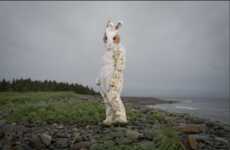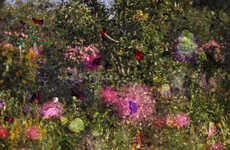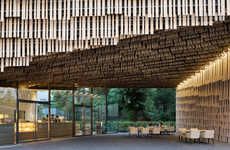
Tobias Wüstefeld Imagines What Phantom Islands Might Look Like
Allen Taylor — April 3, 2014 — Art & Design
References: anotherpony & behance.net
Phantom Islands is a series of photographs of model cities that may have never existed. The models show places that can be found in historical maps or ancient documents but are otherwise non-existent.
The project is by Tobias Wüstefeld who said he "wanted to honor places that at least lived and grew in the heads of the people, till they were erased from the documents."
Wüstefeld's Behance page describes some of the "phantom islands" including Crespo, Sarah Ann Island and Antilla. Some of these islands were identified by explorers such as Christopher Columbus or groups of people on other historical conquests. The models are exquisite, and the series gives you a little more to work with trying to imagine these lost islands.
The project is by Tobias Wüstefeld who said he "wanted to honor places that at least lived and grew in the heads of the people, till they were erased from the documents."
Wüstefeld's Behance page describes some of the "phantom islands" including Crespo, Sarah Ann Island and Antilla. Some of these islands were identified by explorers such as Christopher Columbus or groups of people on other historical conquests. The models are exquisite, and the series gives you a little more to work with trying to imagine these lost islands.
Trend Themes
1. Model Cities - Disruptive innovation opportunity: Develop realistic model cities as a unique form of artistic expression.
2. Historical Maps - Disruptive innovation opportunity: Utilize historical maps to create immersive experiences that allow people to explore and learn about lost civilizations.
3. Imagination-driven Art - Disruptive innovation opportunity: Explore the power of imagination to create artwork that sparks curiosity and wonder.
Industry Implications
1. Artificial Model Making - Disruptive innovation opportunity: Combine traditional model making techniques with advanced technologies to create highly detailed and accurate models.
2. Historical Preservation - Disruptive innovation opportunity: Develop innovative methods to digitally preserve and showcase historical maps and documents for educational and cultural purposes.
3. Digital Art - Disruptive innovation opportunity: Explore digital mediums and techniques to create immersive and interactive artworks that push the boundaries of traditional art forms.
1.5
Score
Popularity
Activity
Freshness























